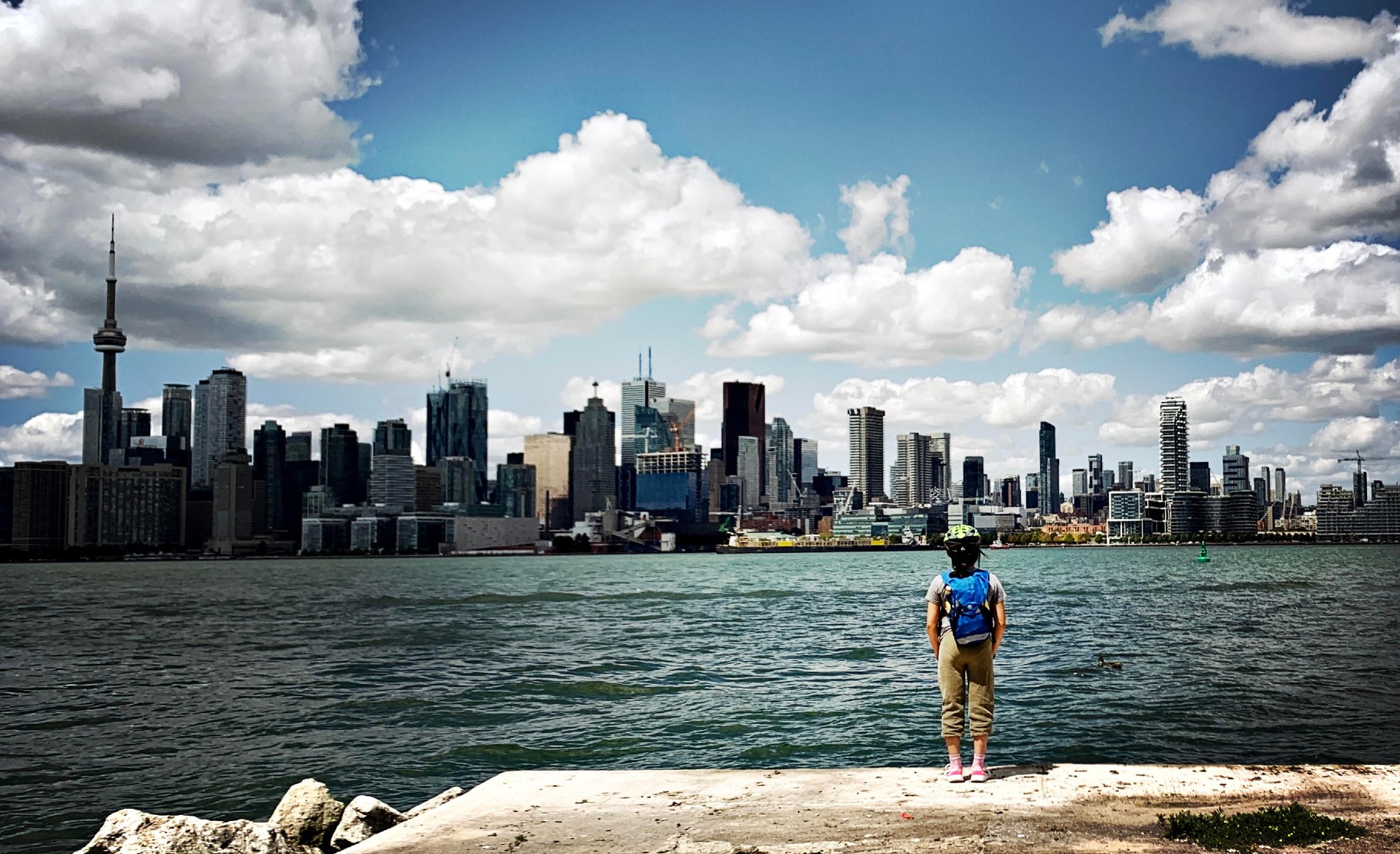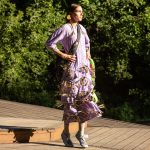This summer, recognizing a significant lack of diverse voices in Canadian arts media, we piloted a program to develop and uplift BIPOC voices in art criticism. If SummerWorks is to truly support BIPOC creators we must also ensure that critical voices are representative of the artistic work being critiqued. For 2020, we commissioned three emerging BIPOC critics to write a response to work in We Were, We Are, We Will Be and paired them with mentors in the field. SummerWorks has not put any parameters or limitations on the writers’ responses.
“Nothing can thrive unless we all thrive together.”
SummerWorks and Canadian Stage are co-presenting We Were, We Are, We Will Be, a co-curated collection of works by Daniele Bartolini and Luke Reece that examines the past, present, and future. In the times of the pandemic, artists are looking to examine past plagues and past trauma to see if perhaps they hold some hope for the future. We have to look at where we’ve been to see where we are going. The series that makes up We Were includes story come to town: colonisation tumble down, a dub poem by d’bi.young anitafrika, Irin Ajomi – My Journey, a first person documentary experience of a refugee journey from Nigeria to Italy by Philip Precious, and Echoes of the Plague Times, an animated comic book and poetic experience by Cree artist Alina Pete. Select SummerWorks pieces are being broadcast online on YouTube, while other components are facilitated in person. The online broadcasts are live and then expire in an attempt to capture the live essence of theatre. The statement above captures the theme that is articulated in all the work that reflects on We Were. All three pieces explore and examine the pain of humanity. Whether it is the violence of colonization of African people and Indigenous people or the crisis of war that displaces our fellow humans, we are still learning the lessons from the past. We cannot move forward if people are left behind. We are all connected, even if we don’t want to be.
anitafrika’s dub poem kicked off the series. The artist stands in front of a tree topless, in African jewellery, and throughout the performance shx moves to the words while hxr voice is overlaid, performing the poem. The video is black and white with subtitles of the poem appearing on the screen. Hxr work delves into the trauma and the pain of colonization from a perspective of the colonizee. It explores how even if we think that things have evolved, especially with the abolishment of slavery, Black people are still oppressed by the same systems, by guns and by people. She often repeats the refrain “racism for change” which captures the idea of oppression and racism still pervading the history and future of humanity.
anitafrika’s performance didn’t translate as well on the screen though, as the visual experience wasn’t as engaging as the spoken word component. Hxr words explore the suffering of colonization but the visual performance simply isn’t as compelling or illustrative of the emotion that the poem invokes. The video aspect is a bit grainy and the background is hard to see, so it is hard to make out the artist’s movements. Her nakedness corelates to her vulnerability in the poetry, but the piece would be more effective without the visual component, so that audience members could immerse themselves in the words.
The second piece in the series is a digital video entitled Irin Ajomi – My Journey by Philip Precious, facilitated and edited by Tommaso Branconi. It depicts a refugee journey from Nigeria to Italy, where Precious now resides. The performance includes abstract video images with first-person documentary-style audio overlaid. Precious combines storytelling with an auditory experience that includes sound effects and throws the viewer into the story. His refugee journey includes people being left behind to die, stifling hot conditions, beatings, prison, and a high level of fear. His words combine with video art that looks like a watercolour painting with jagged edges that slowly ebbs and flows on the screen, depicting different aspects of Precious’s journey, including the boats and buses and trucks that he had to journey in. Precious’ story is harrowing. It depicts his will to leave Nigeria, though he does say that had he known what the journey would be like he never would have tried to leave. Precious’ piece grabs the audience and takes them on the journey, from Nigeria to Libya, to finally wind up in Italy and I was glad I am able to share it with him. He collaborated with Tommaso Branconi, an Italian artist, for this work, while the piece is performed in Yoruba with English subtitles. Precious’ blending of Nigerian language and Italian art pays homage to his life: his roots are Nigerian and his present life is in Italy. Precious leaves us with the hope that his life in Italy will be easier than his journey to reach it, though he says that it isn’t. But that’s a story for another time.
The final piece is an animated comic called Echoes of the Plague Times by Alina Pete. Combining graphic novel animation and poetry, Pete guides us through an exploration of the plagues of the past, from her point of view as a Cree artist. She often feels like the world is ending and has been told that it’s a combination of Obsessive-Compulsive Disorder and anxiety. She leads us on a journey, telling us about her Nohkhum (grandmother) leaving the reserve to help in the hospitals when tuberculosis was prevalent in 1959, and explores the plagues of the past told by her Elders. Then she gets sick with COVID and the animation depicts her lying in bed, imprisoned by fatigue and exhaustion. She slowly recovers and does what she can to rediscover some joy. She weaves together a story about surviving old plagues and how we can look to nature to see if this is, in fact, the end of the world. We all belong to a tapestry and if one of us is hurt, we all begin to unravel. As Pete asserts this, on the screen the audience can see a tapestry with the threads slowly starting to unwind. We are Waniska, threads on the same weaving. Pete’s animations bring her story to life and create beautiful images that stay with you. There are lovely images of Pete’s hand over a pot of seeds and earth, saying prayers for new growth.
All of these pieces show how we are all intrinsically linked, and trauma lived by one group of humanity is felt everywhere and by everyone. It reminds me of Anitopisi, a term coined by Elder Roy in Calgary that speaks about society being a spiderweb and everyone being strands on that web. When there is trouble, the strands will vibrate, and everyone must go to the vibration. We must all heal together, thrive together and move forward together. And we cannot do that without making sure that no one gets left behind. Through art, we are learning that we are not isolated, we are connected by stories and experiences.
As a Calgary based critic, I was able to connect and experience this work in a time where theatre experience as a collective is hard to access. It was invigorating to be connected to art again, to experience storytelling through a familiar but different medium. These artists show how we can still be connected through stories and that, in the face of death and isolation and uncertainty that COVID brings, we can connect and heal through art.
Jenna Shummoogum is a BIPOC theatre critic who has been reviewing in Calgary for a decade. She is a communications and marketing coordinator by day and a theatre and dance critic by night. She has contributed work to Live Wire, getdown.ca, the Calgary Herald and Avenue Magazine online. She reviewed dance for the Calgary Herald for a year and was a member and lead organizer of the Calgary Theatre Critics’ awards (The Critters). She is a member of the Canadian Theatre Critics Association. You can find her on Twitter and read her reviews on her website.




 Critical Response Nicole Eun-Ju Bell Summer 2020
Tue Aug 25, 2020
Critical Response Nicole Eun-Ju Bell Summer 2020
Tue Aug 25, 2020